-
Philippe Roehr has built a nice Junior system from scratch.
He added KB9 Basic and OS65Dv3.3 software, described how to here.
About small SBC systems
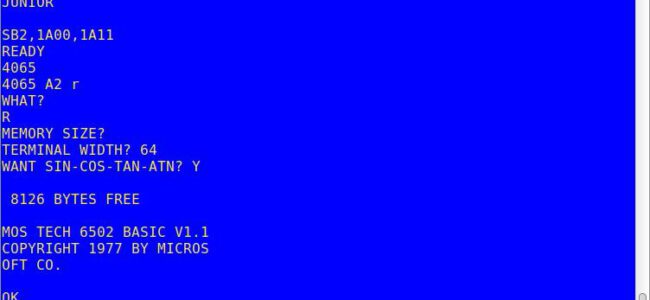
He added KB9 Basic and OS65Dv3.3 software, described how to here.
With thanks to Philippe Roehr from France I present on this page how he got KIM Basic 9 and Ohio Scientific OS65D to work on the Junior
Junior build
Philippe has build a Junior system with at least a main board, an expansion board, 16K Dynamic RAM board expanded to 64K and a floppy controller.
It started with the Junior itself, followed by the expansion card, The monitor software PM and TM were tested.
Floppy controller, RAM card behind.
Junior KB9 Basic
Philippe started with the KB9 binary from the KIM-1 pages.
Philippe then applied the process outlined in the Elektor articles to adjust Basic to the Junior character I/O routines and also improved the speed by adjusting the now unnecessary code that took care of the ROR bug in early 6502’s.
Philippe transferred the binary to the Junior with Ed’s utility KIMTape, producing a KIM-1 audio wave file. The Junior accepts this format, a bit slow but only needed once. After seeing all was well, Philippe wrote the now optimized Junior KB9 Basic to audio wave file, and made a hex dump on the terminal. I picked up the dump, a captured text file form a a terminal emulator, and wrote a conversion program to produce a binary.
All the files here: archive with audio wave file, dump on terminal, binary and conversion software.
OS65DV3.3
After building the Junior, having PM and TM monitor working well, KB9 Basic operational, the next step Philippe took was getting the operating OS65Dv3.3 operational.
He took the steps described by Elektor in the articles with some modern additions.
A Junior able to run OS65DV3.3 needs an expansion card, a RAM card (his is 64K) and the Elektor floppy controller, which is identical to the OSI one (6850 + 6820 ICs)
Instead of a real floppy drive Philip used the hardware Gotek floppy emulator with the Flashfloppy firmware. And used the manuals images of http://osiweb.org, and the OSIHFE utility described in the OSI Web forum posts.
Elektor made a bootstrap eprom (ESS515 download here, source in Paperware 2) able to
* load OS65D (V3.1 or 3.3 as far as I know) from floppy
* give basic I/O capability (RS232 and floppy)
* manage hex display and keyboard
* modify OS65 for the hex display after the very first load to fully adapt them to the system ( about 10 bytes to modify)
Here the OS65DV3.3 disk image in native and Flashfloppy format ready to use.
During the second part of december 2020 Philippe added a real floppy controller and added the Ascii Video Terminal (new version of hackaday). With improved moter control of the floppy drive!
VDU board with OS65D
PMV for OS65D source checked by Philippe Roehr
PMV for OS65D ROM
The KIM Uno, designed and produced and sold by Oscar Vermeulen, is a very simple “open-source hardware” project that started out as a replica of the classic 1976 KIM-1 computer. Later, Apple-1 compatibility and a 6502 programmable calculator mode were added, plus a built-in ‘early 6502 software gems’ collection.
It costs about $10 in commonly available parts (board & parts without case or power supply), but provides a faithful KIM-1 ‘experience’. An Arduino Pro Mini mounted on the back contains all the logic and memory.
I have two versions: the ‘original’ and the later redesigned version, Software-wise the same, with on the top of the PCB room for power connector (GND, +5V or a 9V battery) and a slide switch. , I use them with an USB cable (the blue one of this page) for power and the serial interface provided.
The software already works on the blue pill STM32 or an ESP32, with manual cabling to the keyboard/display and I expect a new version of the PCB for the ESP32.
The software for the serial interface (you really need a good serial terminal emulator, like Minicom or Tera Term) can be used on any Arduino Uno. After power on it delivers a simulation of the LED display and the real KIM TTY teletype interface.
All well described on the pages of Oscar and well worth the money for a ‘6502 SBC’ experience.
I have several KIM UNO’s. The first version and the second one with a slide switch for battery or external power supply. Boxed in the case supplied by Oscar in the kit.
Also a unbuilt one.
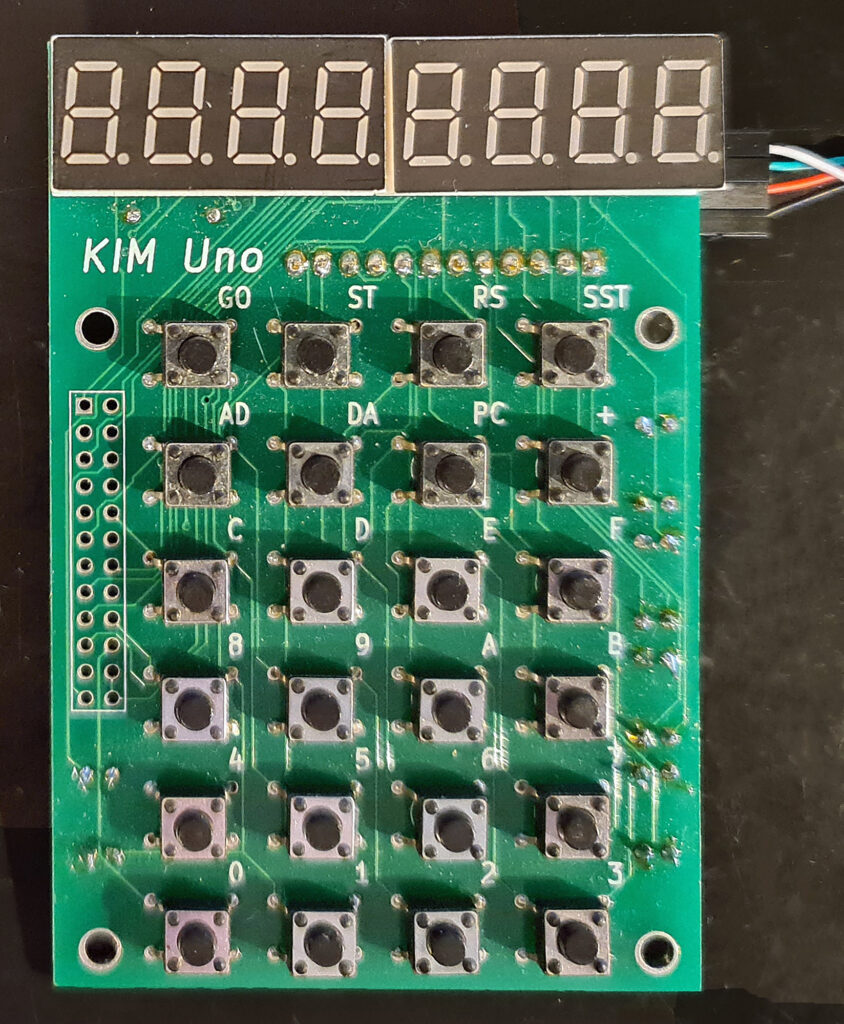
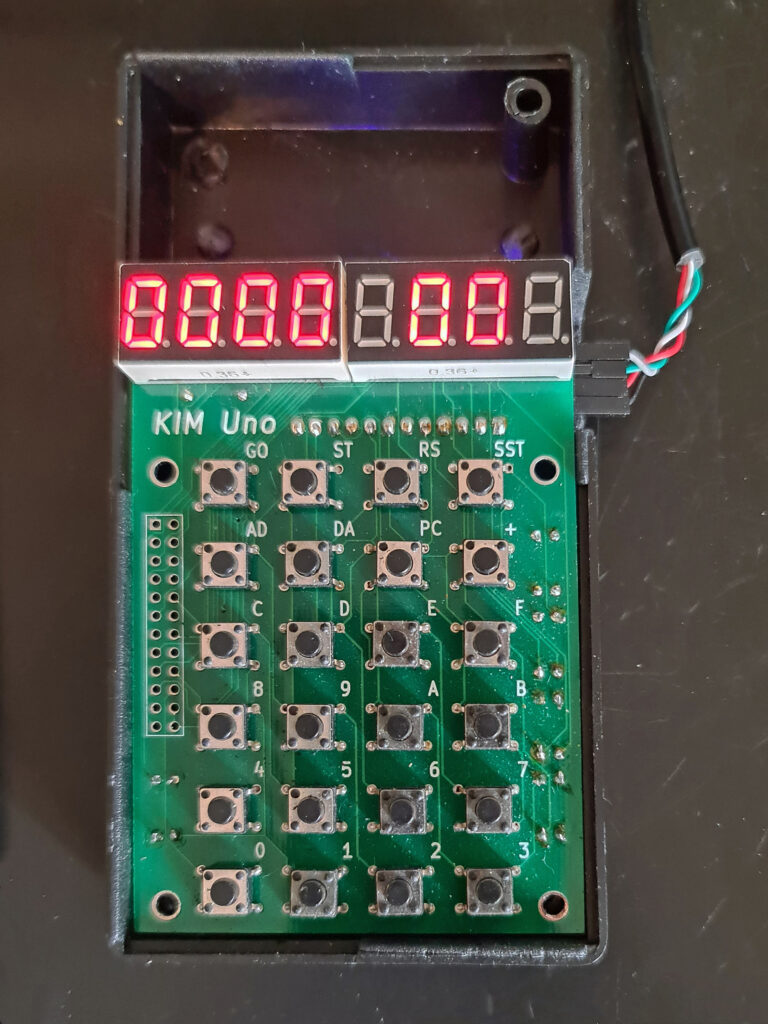

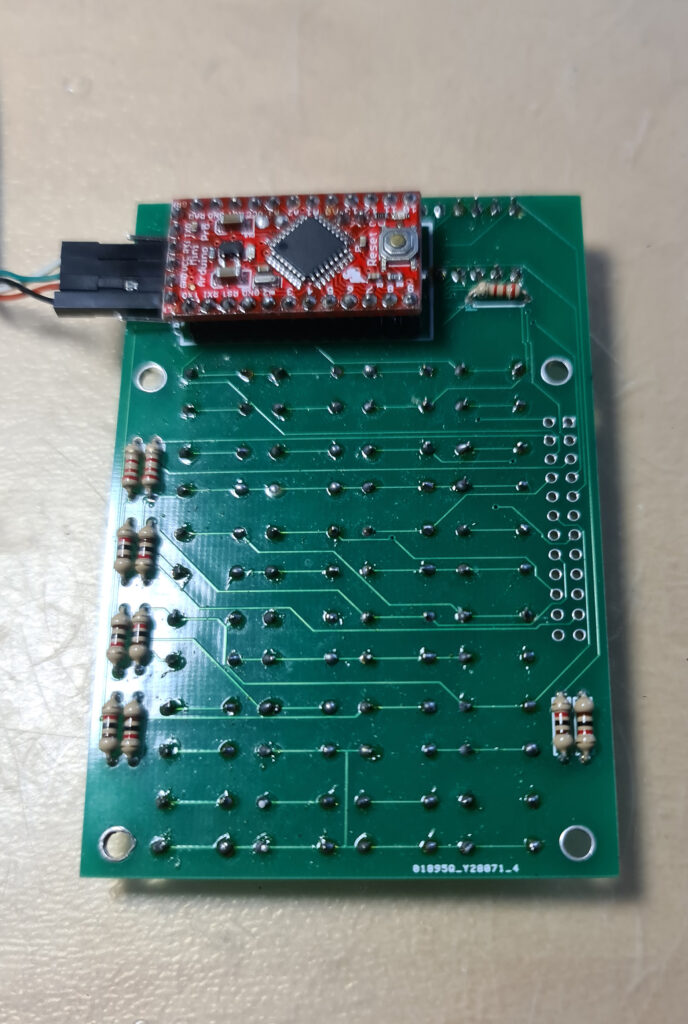
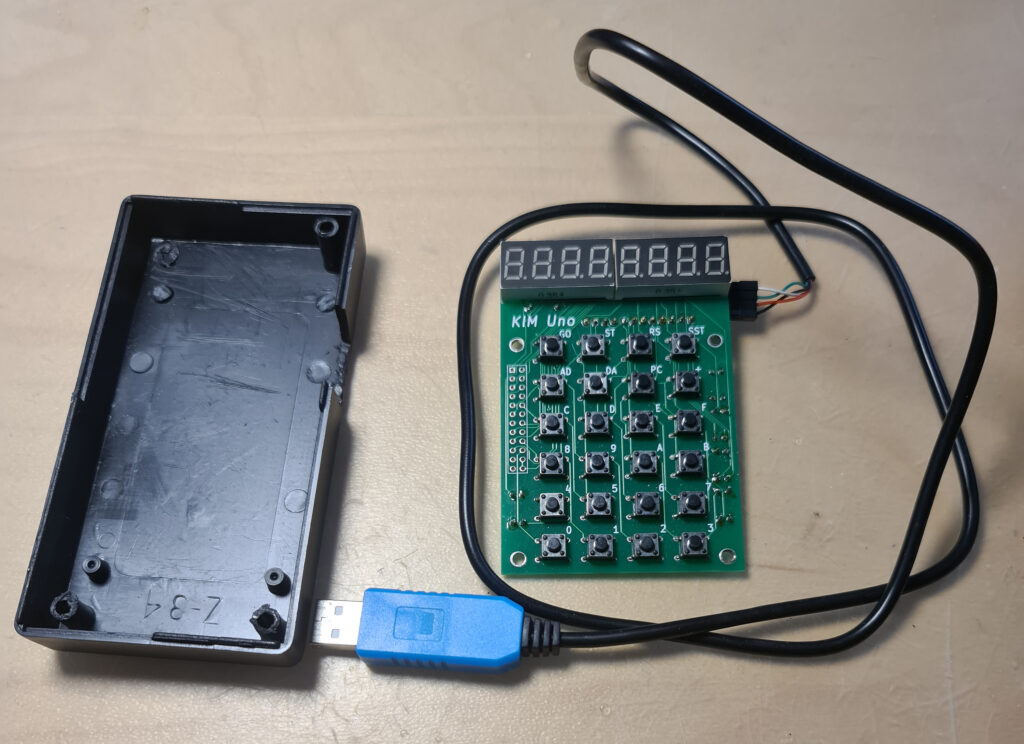


In 2025 I bought a build version from an Italian seller on ebay (retrobit4004). In a nice 3d printed case with a battery compartment , an updated PCB (Oscar supplies the Kicad design files). Alas the connector on the Arduino is soldered wrongly upside down, so I had to cut out more space at the side part.
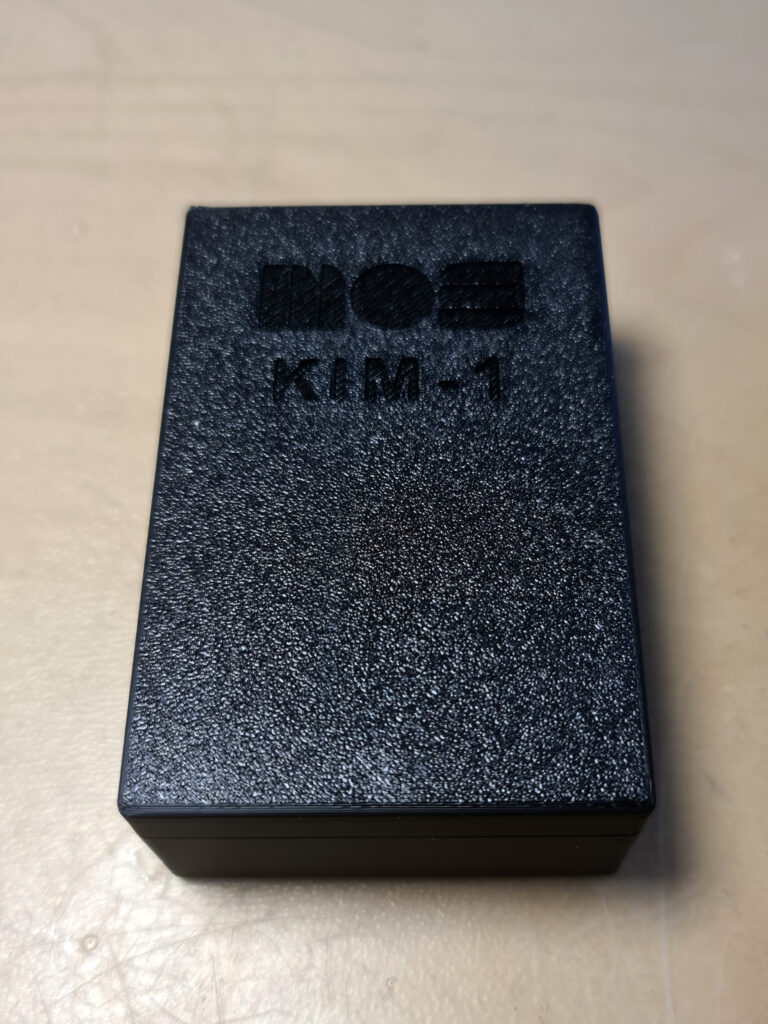

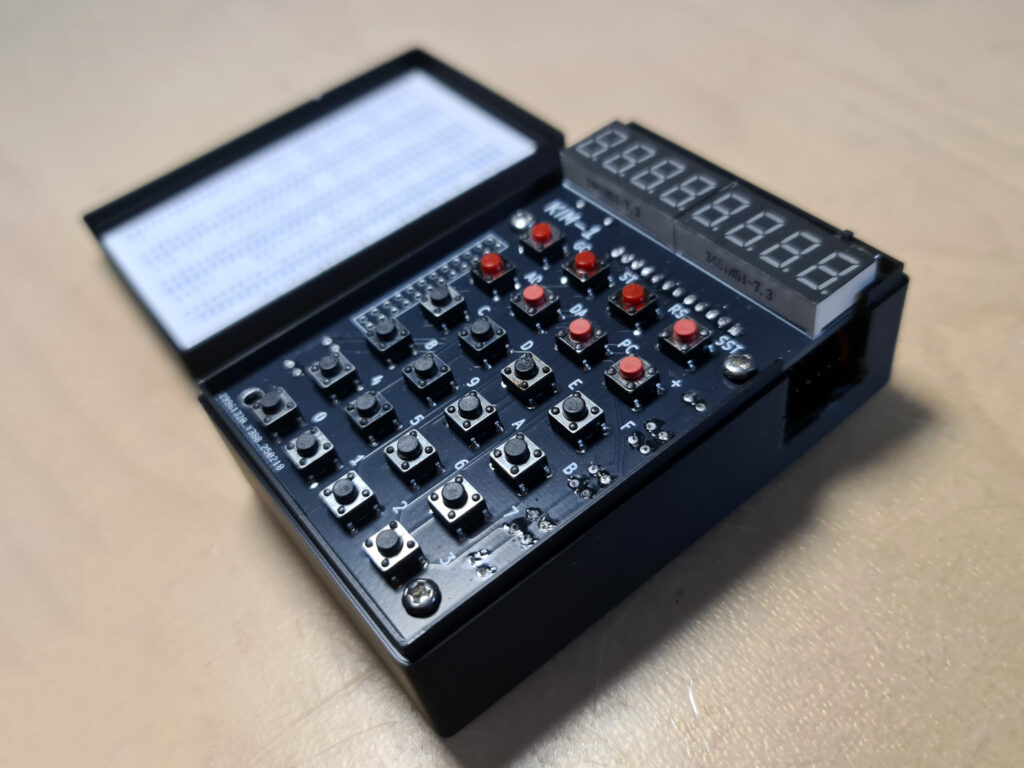

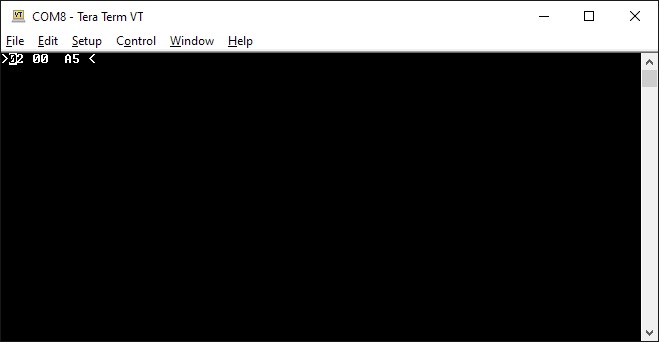
Pressing control keys to perform ST and RS key
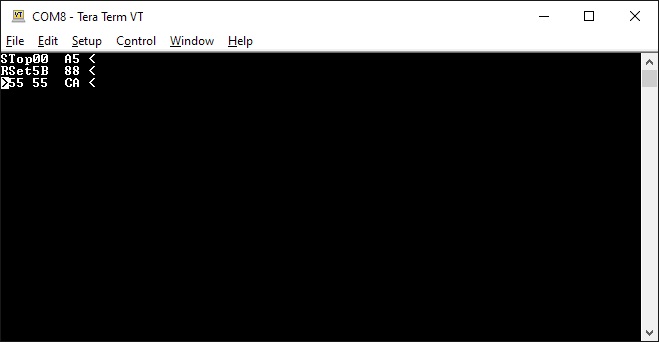
Press TAB to get into KIM TTY mode. Make sure to select on your terminal Local Echo and CAPS Lock. Read the KIM-1 User manual how the monitor operates.
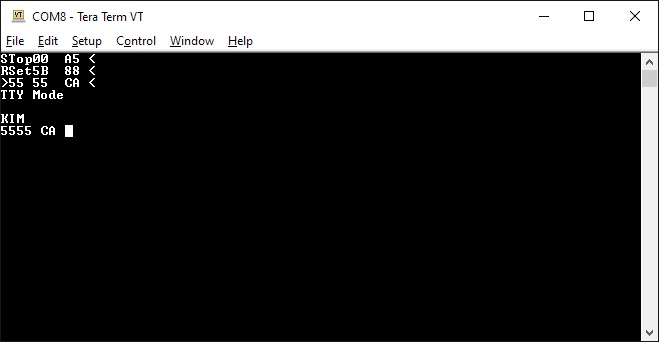
The Apple 1 mode, fully functional.
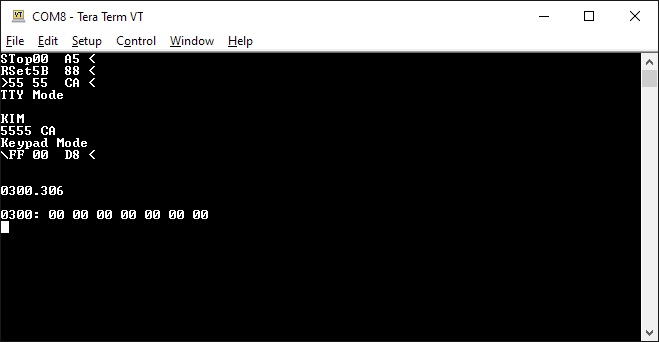
Microchess adapted to serial
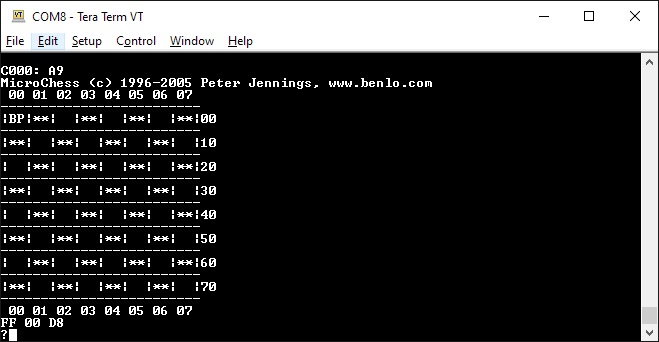
The Wozniak/Baum disassembler
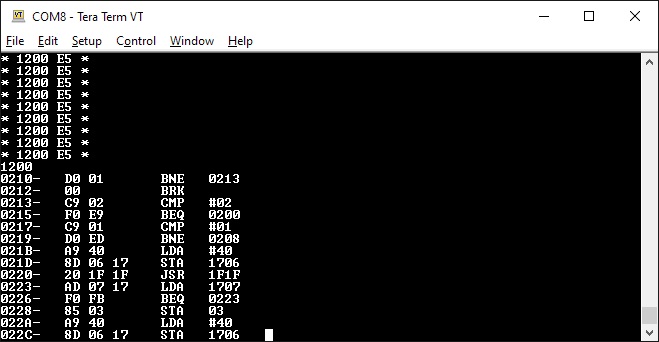
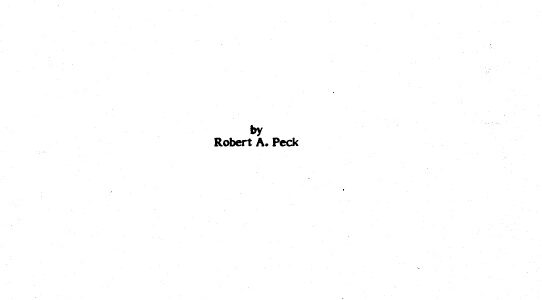
Thanks to Larry:
New SYM-1 document: KIM/SYM : First Book of KIM appendix
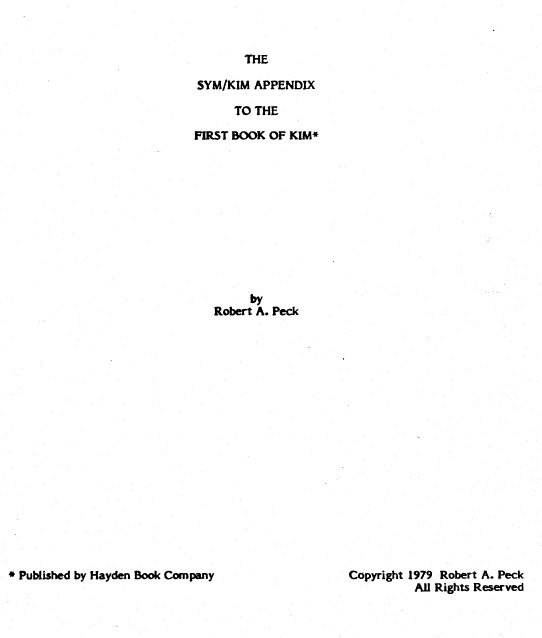
A program, SerialTester, a guide and test results.
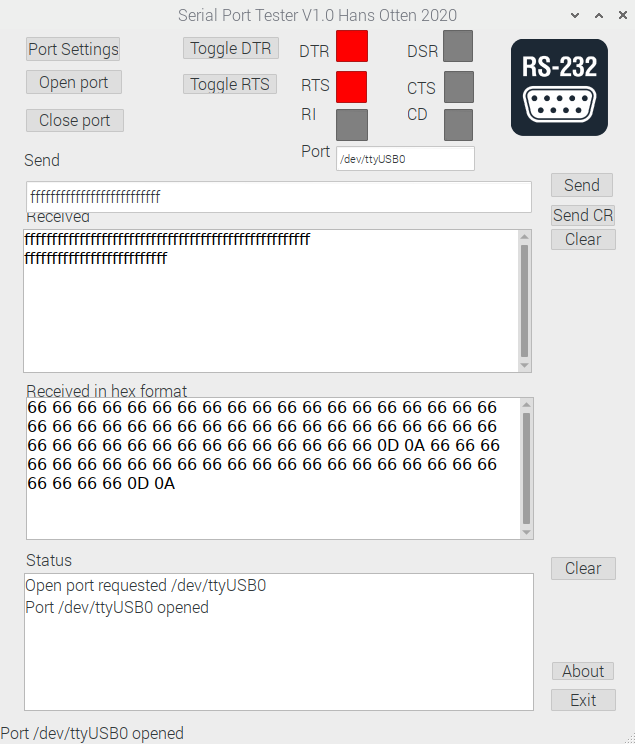
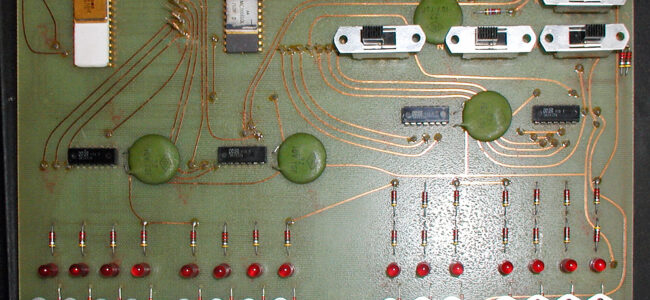
Found some photos of OSI 300 trainers, some youtube videos, circuit diagram and component layout.
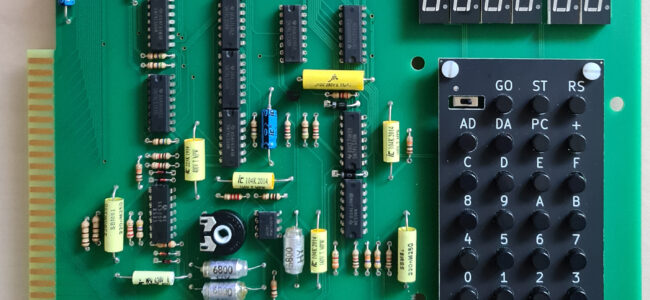
Dave Williams designed, builds and sells on ebay MOS KIM-1 Reproduction boards. A real KIM-1 clone!
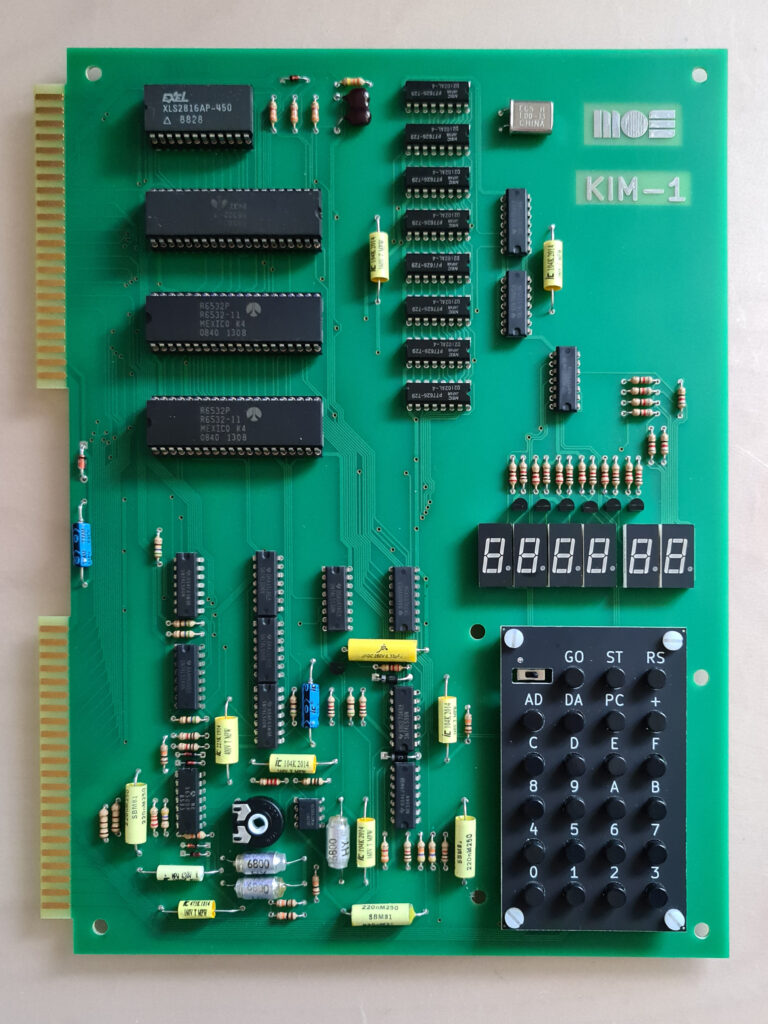
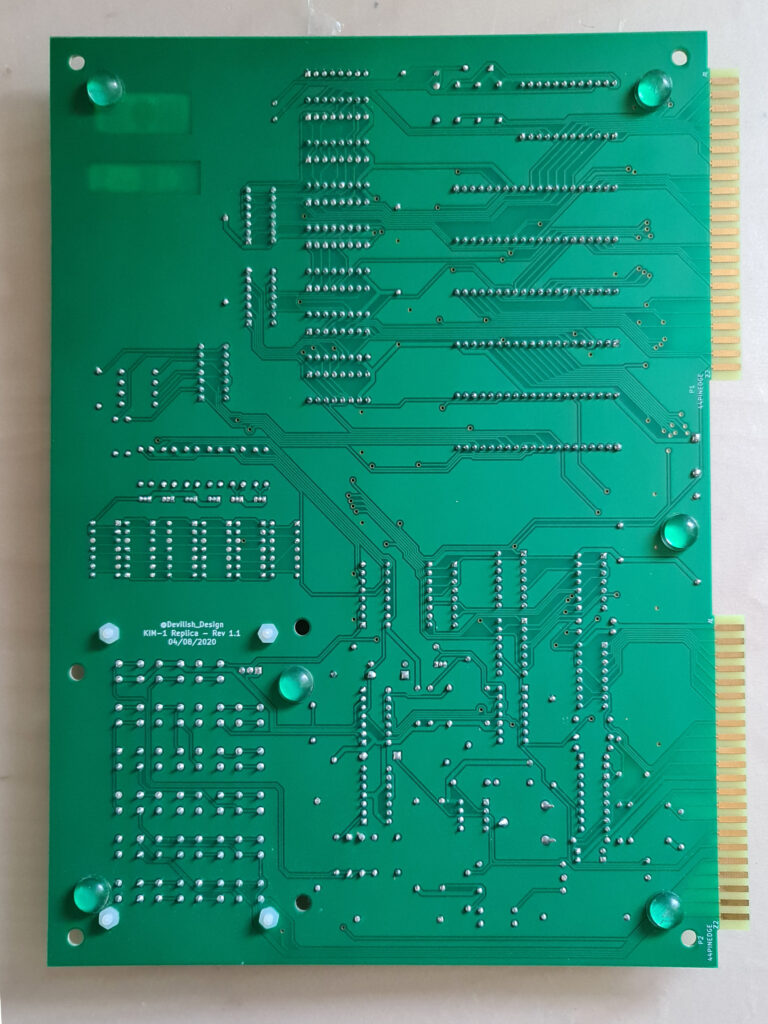

Dave Williams designed, build and sells MOS KIM-1 Reproduction boards. A real KIM-1 clone! The goal was to reproduce a KIM-1 as exact as possible.
So the MOS KIM-1 Reproduction board has the same dimensions, same connectors and as much as possible the same components, including the audio cassette interface, 1K RAM with 8 2102 RTAM ICs. The keyboard is reproduced with the same layout and looks and feels quite identical. Components types are chosen close the the originals (though the KIM-1s went to many revisions with varying looking components) and placed on the same location. The CPU is of course a 6502 at 1 MHz crystal clock frequency. The edge (Application and expansion) connectors are physically and logical identical.
Since 6530 RRIOT ICs (the 002 and 003 variant) are not available anymore, the same solution as in the other clones is chosen: a 6532 RIOT with a 2K EEPROM and some logic ICs (3) to get a hardware solution that makes it look exactly the same for the KIM-1 ROM software. The PCB is a new design, not the typical 70ties curved PCB lines hand layout design.
The result is great: it feels, looks and operates as an original KIM-1. First Book of KIM programs run, MICROCHESS runs. Even Microsoft KIM-1 Basic run, when additional RAM is connected.
I now (Januari 2023) have two of the MOS KIM-1 Reproduction boards. Dave Williams did a new version, with a white PCB. And the new I/O card has a TTY swicth and a serial DB-9 connector (with a MAX3232 interface, so true RS232 levels).
Documents (thanks to Dave Williams!) to download
 |
MOS KIM-1 Reproduction Board Layout |
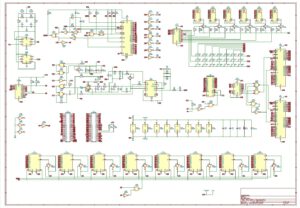 |
MOS KIM-1 Reproduction Schematic |
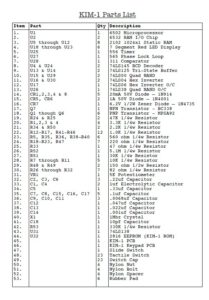 |
MOS KIM-1 Reproduction BOM |
I added the Corsham Technologies KIM-1 60K RAM/ROM board and the KIM I/O board, which makes it a great system!
With the MOS KIM-1 Reproduction comes a small edge connector PCB for audio and power connections. Alas no TTY connections and keyboard/TTY switch. On an USB stick the well known KIM-1 documentation (all also found on this site!) and the First Book of KIM programs, as typed in by Jeff Tranter in papertape format, also found here. But as extra the programs as KIM-1 audio files are provided, as WAV files, ready to load into the KIM-1.
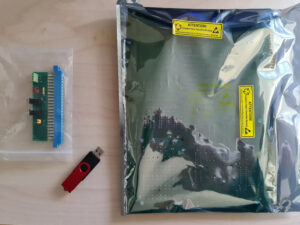 |
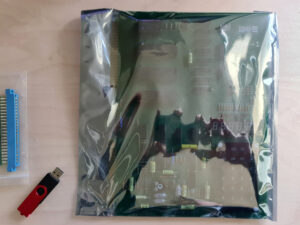 |
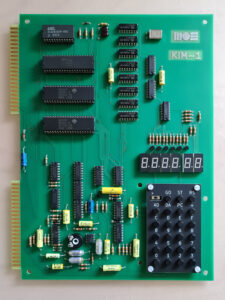 |
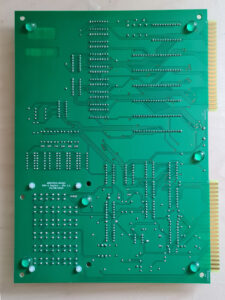 |
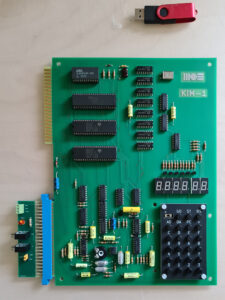 |
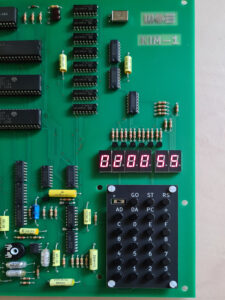 |
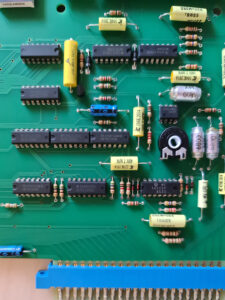 |
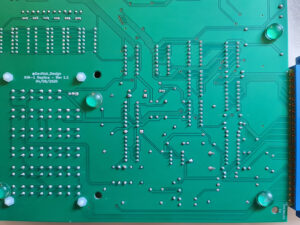 |
Some photos from Dave Williams, showing the KIM-1 Reproduction connected to an audio cassette recorder, a KIM-1 S-100 Motherboard with a RAM card, running Microsoft Basic KB9 and a production line of KIM-1 Reproduction (with a real KIM-1 in the top row!)
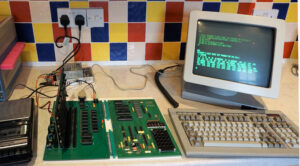 |
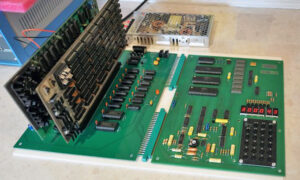 |
 |
 |
My MOS KIM-1 Reproduction will be connected to Corsham Technologies cards: SRAM and EEPROM and I/O card
Corsham Technologies KIM-1 RAM/ROM and I/O board connected to a KIM-1
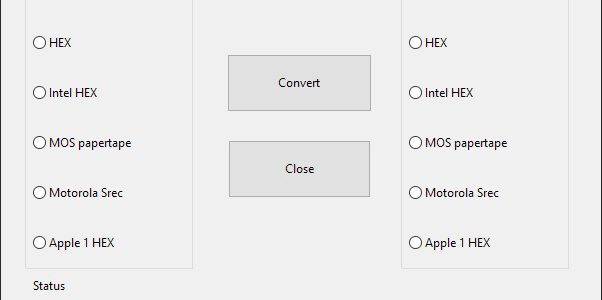
A program to convert between hex or binary files for 8 bit systems with a 64K address space.
V2 adds the Wozmon Apple 1 format and allow multipart Intel Hex, MOS Papertape and Motorola S records.
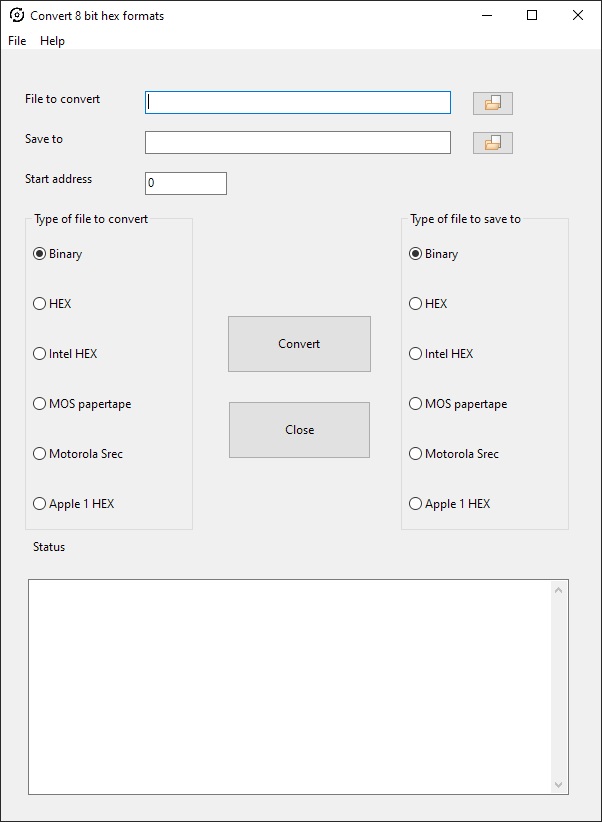
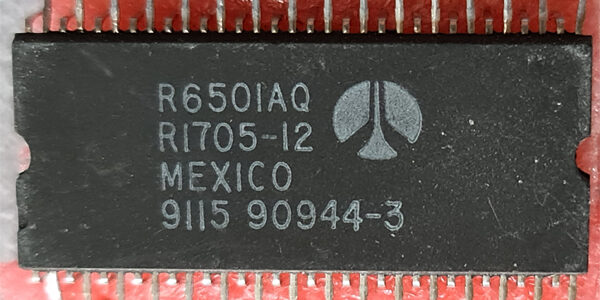
New ICs bought recently:
6501AQ, W65C22S, W65C22N in the 65XX IC collection.